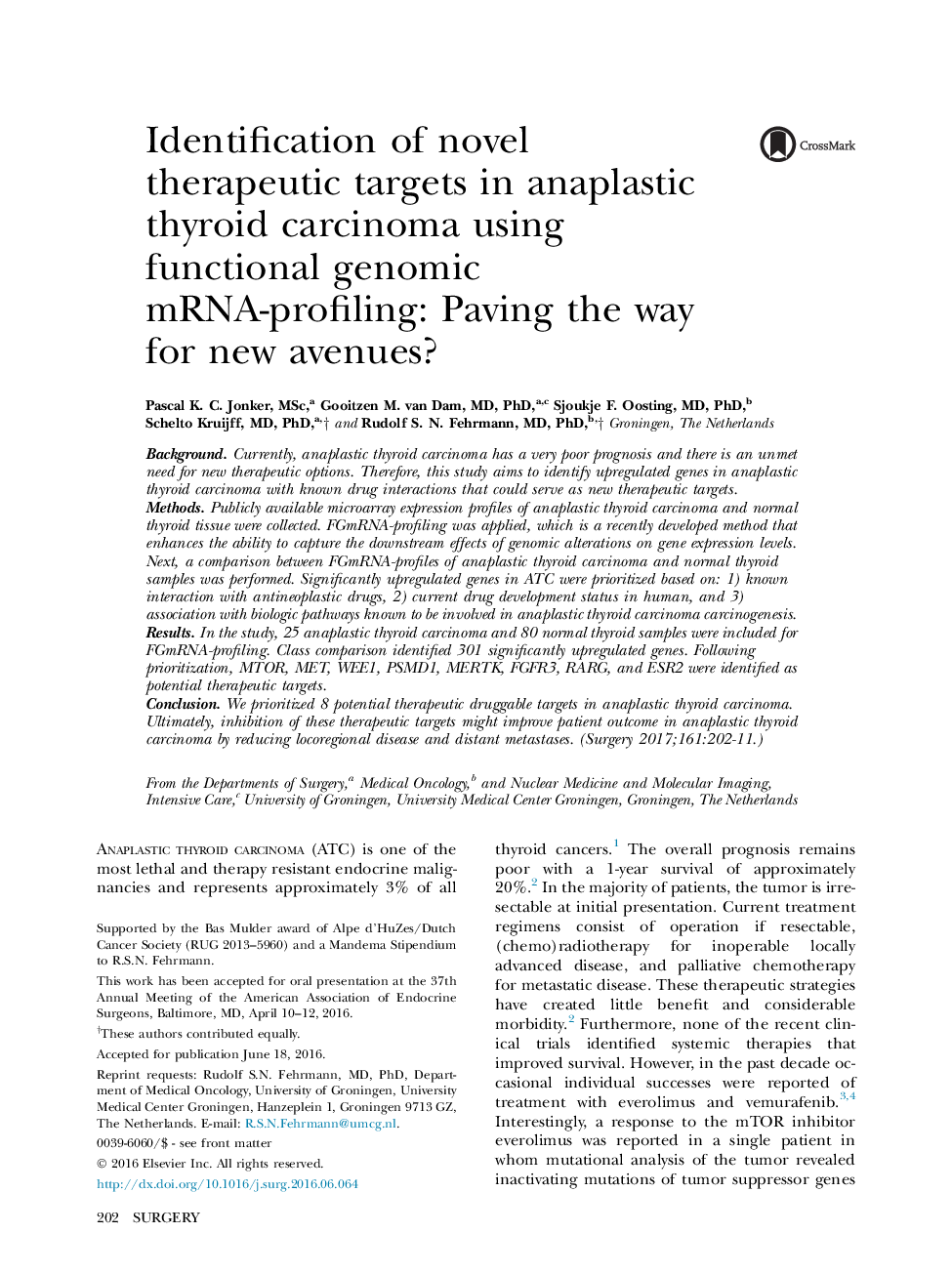| Article ID | Journal | Published Year | Pages | File Type |
|---|---|---|---|---|
| 5734529 | Surgery | 2017 | 10 Pages |
BackgroundCurrently, anaplastic thyroid carcinoma has a very poor prognosis and there is an unmet need for new therapeutic options. Therefore, this study aims to identify upregulated genes in anaplastic thyroid carcinoma with known drug interactions that could serve as new therapeutic targets.MethodsPublicly available microarray expression profiles of anaplastic thyroid carcinoma and normal thyroid tissue were collected. FGmRNA-profiling was applied, which is a recently developed method that enhances the ability to capture the downstream effects of genomic alterations on gene expression levels. Next, a comparison between FGmRNA-profiles of anaplastic thyroid carcinoma and normal thyroid samples was performed. Significantly upregulated genes in ATC were prioritized based on: 1) known interaction with antineoplastic drugs, 2) current drug development status in human, and 3) association with biologic pathways known to be involved in anaplastic thyroid carcinoma carcinogenesis.ResultsIn the study, 25 anaplastic thyroid carcinoma and 80 normal thyroid samples were included for FGmRNA-profiling. Class comparison identified 301 significantly upregulated genes. Following prioritization, MTOR, MET, WEE1, PSMD1, MERTK, FGFR3, RARG, and ESR2 were identified as potential therapeutic targets.ConclusionWe prioritized 8 potential therapeutic druggable targets in anaplastic thyroid carcinoma. Ultimately, inhibition of these therapeutic targets might improve patient outcome in anaplastic thyroid carcinoma by reducing locoregional disease and distant metastases.
